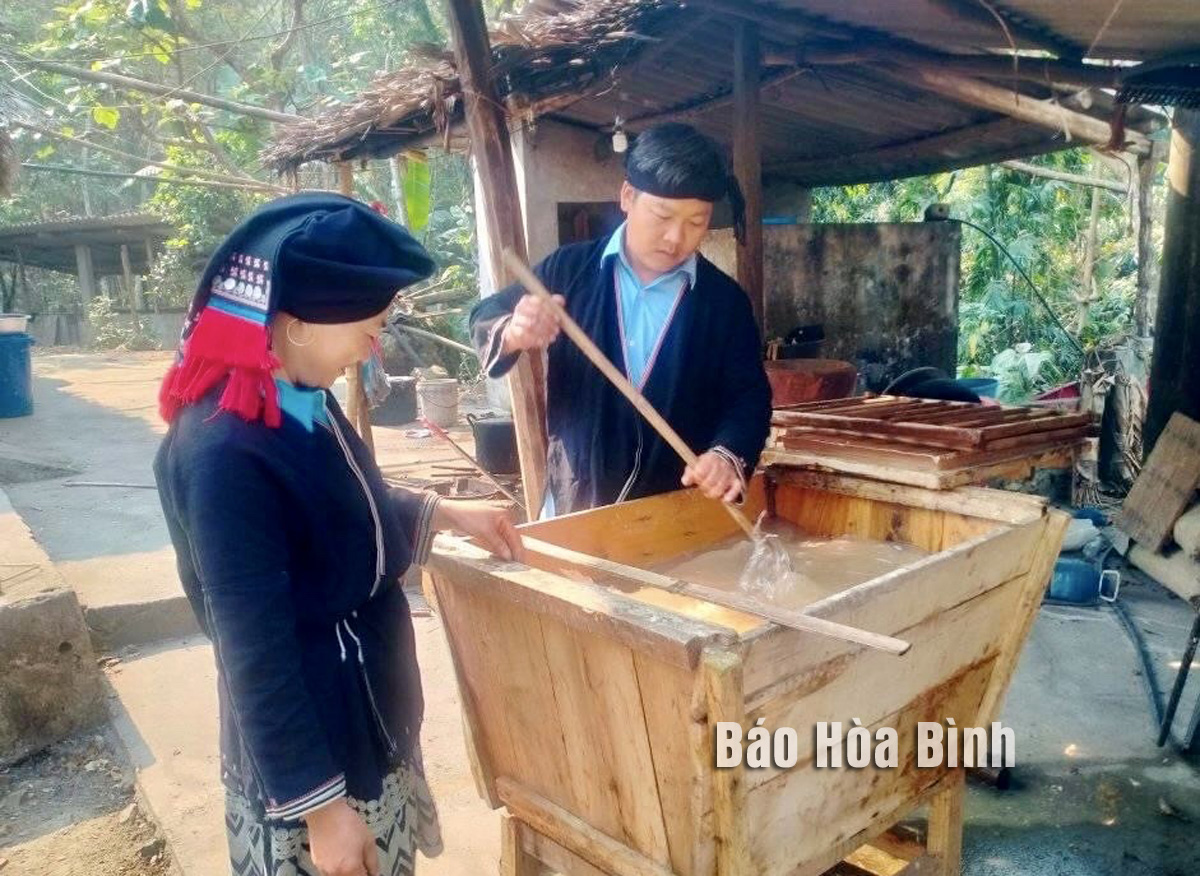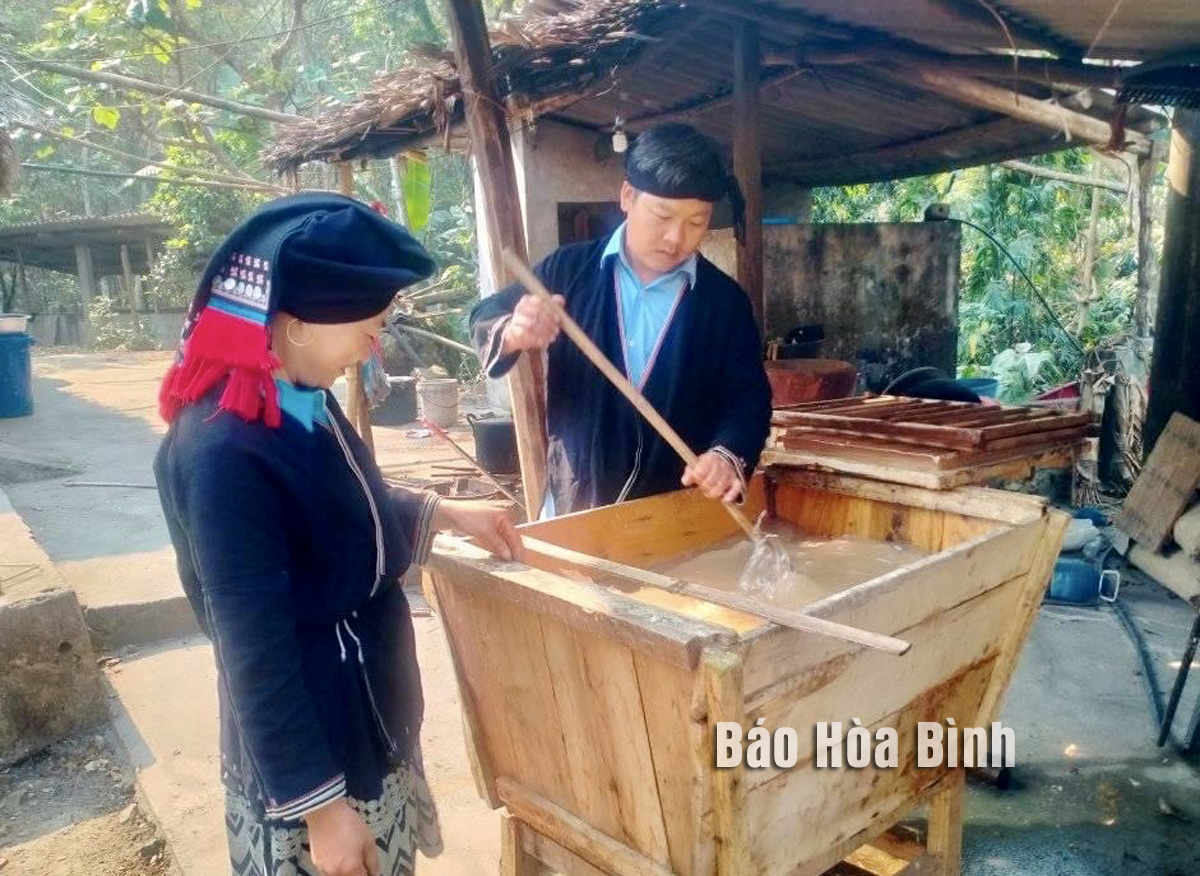
In the first nine months of 2024, Da Bac district has intensified efforts in preserving and promoting the cultural values of ethnic groups in tandem with community-based tourism development. Many cultural tourism products have been built on the basis of preserving and maintaining the architecture of ethnic minority houses as well as traditional crafts such as making do (poonah) paper, brocade weaving, embroidery, and indigo dyeing.

Residents of
Sung hamlet in Cao Son commune, Da Bac district, preserve traditional crafts
associated with the building of community-based tourism products.
Many traditional festivals, such as the Thac Bo Temple
Festival, have been included in the tourism strategy. The Cau Muong Festival in
Muong Chieng commune and others such as the Muong ethnic group's rice-sowing
festival, lap tinh (naming) ritual of the Dao ethnic people, and the new rice
festival of the Tay ethnic group have been preserved.
The district has paid attention to organising activities to
promote the value of both tangible and intangible cultural heritage of the Tay,
Muong, and Dao ethnic groups, while building traditional cultural models of
ethnic minorities under Project 6 of the National Target Programme on
Socio-Economic Development in Ethnic Minority-Inhabited and Mountainous Areas
for 2023 in Sung hamlet, Cao Son commune.
Community-based tourism has been stepped up in Ke hamlet,
Hien Luong commune; Duc Phong and Doan Ket hamlets, Tien Phong commune; Sung
hamlet in Cao Son commune; and Dua (Coconut) Island tourism site in Vay Nua
commune. In the first months of this year, the district welcomed over 145,000
tourists, including nearly 4,600 foreign visitors, and earned 64 billion VND
(about 2.58 million USD) from tourism.
A diverse chain of eco-tourism and resort destinations concentrated in Hoa Binh city and the districts of Tan Lac, Da Bac, and Luong Son… Along with the launch of several key high-quality resort tourism projects, these developments have reshaped the landscape and enhanced the appeal of Hoa Binh as a travel destination.
Boasting diverse terrain, a mild climate, and rich natural resources, Cao Phong district is increasingly asserting its place on Vietnam’s tourism map, attracting both domestic and foreign visitors. The district is renowned for its stunning landscapes, majestic mountains, a crystal-clear hydropower lake, and the unique cultural identity of local ethnic groups.
With its pristine landscapes, unique cultural heritage of Muong ethnic minority, and an expanding range of visitor experiences, Tan Lac district of Hoa Binh has fast become a captivating destination for both domestic and international tourists.
Until now, Sung village in Cao Son commune, Da Bac district remains the only Dao ethnic community in Hoa Binh province to develop a community-based tourism model. Beyond its untouched natural landscapes, cultural identity serves as the cornerstone attraction for visitors.
Alongside the diverse cultural identities of the Kinh, Muong, Tay, Thai, Dao, and Mong ethnic people, Hoa Binh province is also renowned as the "capital" of the northwestern Vietnamese cuisine, offering unique and distinctive dishes. At festivals, during Lunar New Year (Tet), or on significant family or community occasions, special dishes are prepared, leaving a lasting impression on visitors.
A Phong Linh (Yellow Tabebuia) flower garden in Thang village, Thach Yen commune, Cao Phong district is currently in full bloom, drawing a large number of visitors.



